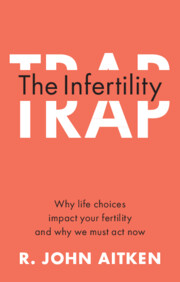Chapter 5
Published online by Cambridge University Press: 05 May 2022
Summary
The miracle of conception – how we all got to be here Successful conception requires spermatozoa to exhibit a wide range of sophisticated behaviours and biochemical changes. They are capable of exhibiting rheotaxis, thermotaxis and chemotaxis on their voyage to the site of fertilization in the oviduct. Once these cells have successfully engaged the cervix and uterotubal junction they come to rest in the isthmic region of the Fallopian tubes, where they are thought to bind to the oviductal epithelium and enter a state of quiescence. They are ultimately awakened from this gentle slumber by a signal coincident with ovulation and break away from the isthmic epithelium in a frenzied state of hyperactivation. These hyperactivated cells then bring their receptors-for-the-egg to the cell surface and go in search of their prey, aided by signals given out by the egg bearing a come-hither message. At this point in development, it is a race to find the fittest spermatozoa capable of engaging in the myriad cellular interactions required to achieve fertilization. It is a race that only one cell can win out of the ~200 million that started the race. Each one of us is the result of an incredibly complex obstacle race where all of the other competitors died.
Keywords
- Type
- Chapter
- Information
- The Infertility TrapWhy life choices impact your fertility and why we must act now, pp. 180 - 202Publisher: Cambridge University PressPrint publication year: 2022



